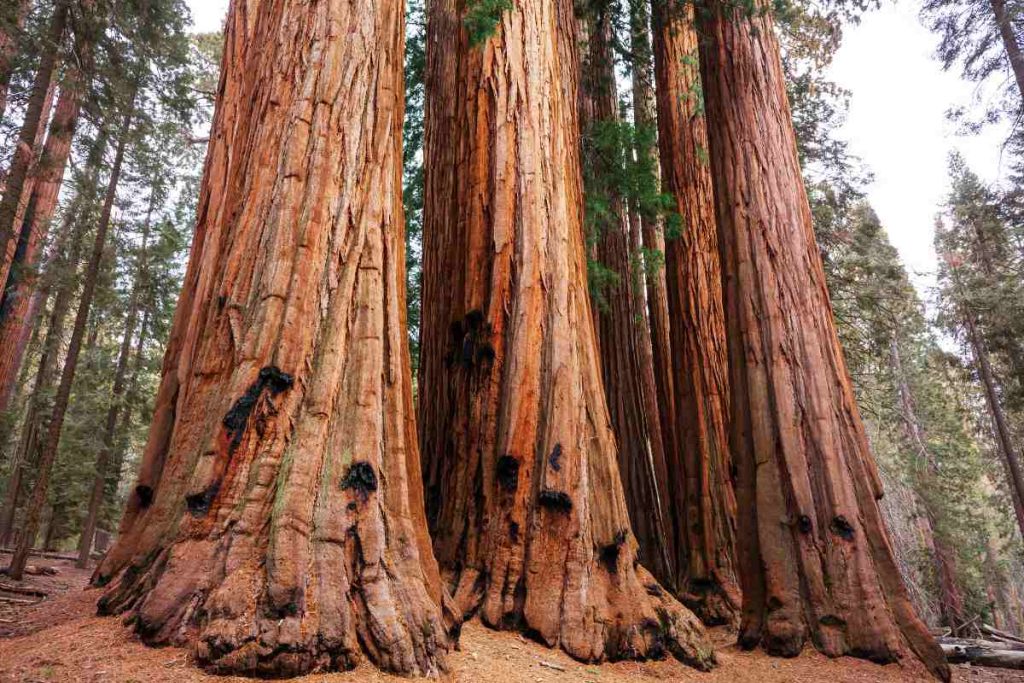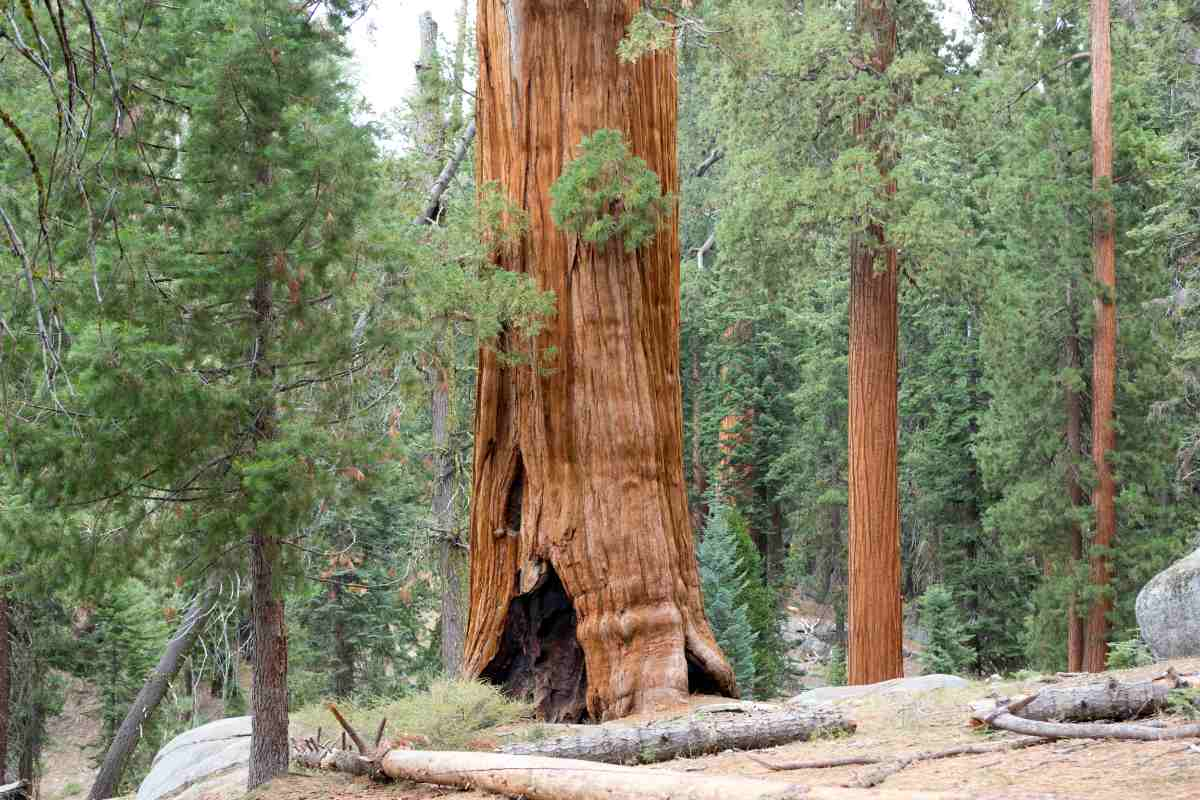The Incredible Journey of the Biggest Giant Sequoia Tree
The giant sequoia tree, scientifically known as Sequoiadendron giganteum, is one of the most awe-inspiring and majestic wonders of nature. These towering trees can reach heights of over 300 feet and have a lifespan of thousands of years. They are native to the western slopes of the Sierra Nevada mountains in California and are considered icons of the natural world. The giant sequoia holds great significance in nature due to its size, beauty, and ecological importance.
The Giant Sequoia: A Majestic Wonder of Nature
The giant sequoia is truly a sight to behold. These massive trees can grow to be the largest living organisms on Earth by volume. They have reddish-brown bark that can be up to three feet thick, protecting them from fire and other natural elements. The branches of a giant sequoia are often covered in small, scale-like leaves that give the tree a unique appearance.
What truly sets the giant Sequoia apart is its incredible lifespan. These trees can live for thousands of years, with some individuals estimated to be over 3,000 years old. This longevity is due in part to their ability to withstand harsh conditions and adapt to their environment. The giant sequoia’s size, appearance, and lifespan make it a true marvel of nature.
Seeds of Greatness: How the Journey Begins
The journey of a giant sequoia begins with its seeds. The cones of a giant sequoia are about the size of a chicken egg and contain hundreds of seeds. These cones take about 20 months to mature before they are ready to release their seeds.
When the cones open, they release their seeds into the air. However, the seeds themselves are not dispersed very far from the parent tree. Instead, they tend to fall within a relatively small radius around the tree. This limited dispersal helps ensure that the seeds have a suitable environment for germination.
The Germination Process: Nurturing Life from Within
Once a giant sequoia seed has fallen to the ground, it must go through a process called germination to begin its journey toward becoming a towering tree. Germination requires specific conditions to be met, including moisture, sunlight, and nutrients.
The first step in the germination process is for the seed to absorb water. This triggers the release of enzymes that break down stored food reserves within the seed. As the seed absorbs more water, it begins to swell and eventually cracks open, allowing the root to emerge.
Once the root has emerged, it begins to grow downward into the soil, anchoring the seedling in place. At the same time, a shoot emerges from the seed and begins to grow upward towards the sunlight. As the shoot grows, it develops leaves that allow it to photosynthesize and produce energy.
Growing Tall and Strong: The Early Years of a Giant Sequoia

During the early years of a giant sequoia’s life, it undergoes rapid growth and development. The tree establishes a robust root system that allows it to access water and nutrients from the soil. This root system also helps anchor the tree in place, providing stability as it grows taller.
As the tree grows upward, it develops a thick trunk that provides support and allows it to reach great heights. The trunk of a giant sequoia can grow to be several feet in diameter, providing stability and strength as the tree continues to grow.
During this stage of growth, the tree also develops branches and foliage that allow it to photosynthesize and produce energy. These branches continue to grow and spread as the tree matures, creating a dense canopy of leaves that provide shade and habitat for other organisms.
Battling the Elements: Surviving Harsh Conditions
Giant sequoias face several challenges in their natural environment. One of the biggest challenges is drought, as the trees require a significant amount of water to survive. However, they have adapted to these conditions by developing a deep root system that allows them to access water from deep within the soil.
Another challenge faced by giant sequoias is pests and diseases. Insects such as bark beetles can infest the trees and cause damage, while diseases such as root rot can weaken the tree’s root system. However, giant sequoias have developed defenses against these threats, including producing resin to repel insects and compartmentalizing infected areas to prevent the spread of disease.
The Power of Adaptation: How Giant Sequoias Thrive in Different Environments
Giant sequoias are incredibly adaptable trees that can thrive in a variety of environments. While they are most commonly found in the Sierra Nevada mountains, they can also be found in other parts of California and even in other countries such as Australia and New Zealand.
In each environment, giant sequoias have adapted to the specific conditions present. For example, in areas with high rainfall, the trees have developed shallow root systems that allow them to access water near the surface. In drier areas, they have developed deep root systems that can reach water deep within the soil.
Giant sequoias are also able to withstand extreme temperatures, from hot summers to cold winters. Their thick bark helps insulate them from temperature fluctuations and protects them from fire.
Reaching for the Sky: The Remarkable Growth of a Giant Sequoia
As a giant sequoia matures, it continues to grow taller and broader. These trees have an impressive growth rate, with some individuals capable of adding several feet in height each year. This rapid growth allows them to reach great heights and become some of the tallest trees on Earth.
The growth of a giant sequoia is fueled by photosynthesis, the process by which the tree converts sunlight into energy. The leaves of the tree capture sunlight and use it to produce sugars, which are then transported throughout the tree to fuel growth and development.
In addition to sunlight, giant sequoias require a steady supply of water and nutrients to support their growth. They have developed a network of roots that allows them to access these resources from the soil. This combination of sunlight, water, and nutrients allows the tree to continue growing throughout its lifespan.
A Home for Many: The Ecosystem Supported by Giant Sequoias
Giant sequoias support a diverse ecosystem within and around their groves. The trees themselves provide habitat for a variety of organisms, including birds, mammals, and insects. The dense canopy of leaves provides shade and shelter, while the branches offer perches and nesting sites.
The fallen logs and decaying wood of giant sequoias also create a habitat for a variety of organisms. Insects and fungi break down the wood, releasing nutrients back into the soil and providing food for other organisms. These fallen logs also create microhabitats within the forest, providing shelter for small animals and plants.
The seeds of giant sequoias are an important food source for many animals. Squirrels and birds often feed on the seeds, while bears have been known to dig up the cones and eat the seeds inside.
The Role of Fire: How It Shapes the Life Cycle of a Giant Sequoia
Fire plays a crucial role in the life cycle of a giant sequoia. While fire can be destructive to many trees, it benefits giant sequoias in several ways.
Firstly, fire helps to release the seeds from the cones of giant sequoias. The heat from a fire causes the cones to open and release their seeds into the air. This allows for greater dispersal of the seeds and increases the chances of successful germination.
Secondly, fire helps to clear away competition for resources. Many other tree species are unable to withstand the intense heat of a fire and are killed off. This creates open space and allows the giant sequoias to access more sunlight, water, and nutrients.
Finally, fire helps to recycle nutrients back into the soil. When a fire burns through a grove of giant sequoias, it releases nutrients stored in the trees and returns them to the soil. This nutrient-rich soil then provides a fertile environment for new growth.
The Legacy Lives On Preserving and Protecting Giant Sequoias for Future Generations
Given their ecological importance and cultural significance, efforts are being made to preserve and protect giant sequoias for future generations. National parks such as Sequoia and Kings Canyon in California have been established to protect these trees and their surrounding ecosystems.
Conservation organizations are also working to raise awareness about the importance of giant sequoias and the threats they face. These organizations conduct research, monitor populations, and advocate for policies that protect these majestic trees.
We must continue to prioritize the preservation of giant sequoias. These trees have been around for thousands of years and have witnessed countless changes in their environment. By protecting them, we ensure that future generations will be able to experience the awe-inspiring beauty of these ancient giants.
Conclusion
The journey of a giant sequoia is genuinely remarkable. From its humble beginnings as a tiny seed, it grows into a towering tree that can live for thousands of years. Along the way, it faces numerous challenges but adapts and thrives in its environment.
Giant sequoias support a diverse ecosystem and provide a habitat for many species. They play a crucial role in their environment by releasing seeds, clearing competition, and recycling nutrients through fire.
It is our responsibility to appreciate and protect these majestic wonders of nature. By preserving and conserving giant sequoias, we ensure that future generations will be able to witness the awe-inspiring beauty and ecological importance of these incredible trees.
More Sources: The Foxtail Pine: Witnessing Nature’s Resilience in the High Sierras


Pingback: Discovering the Secrets of the Biggest Dinizia Excelsa Tree - Lakeofcode